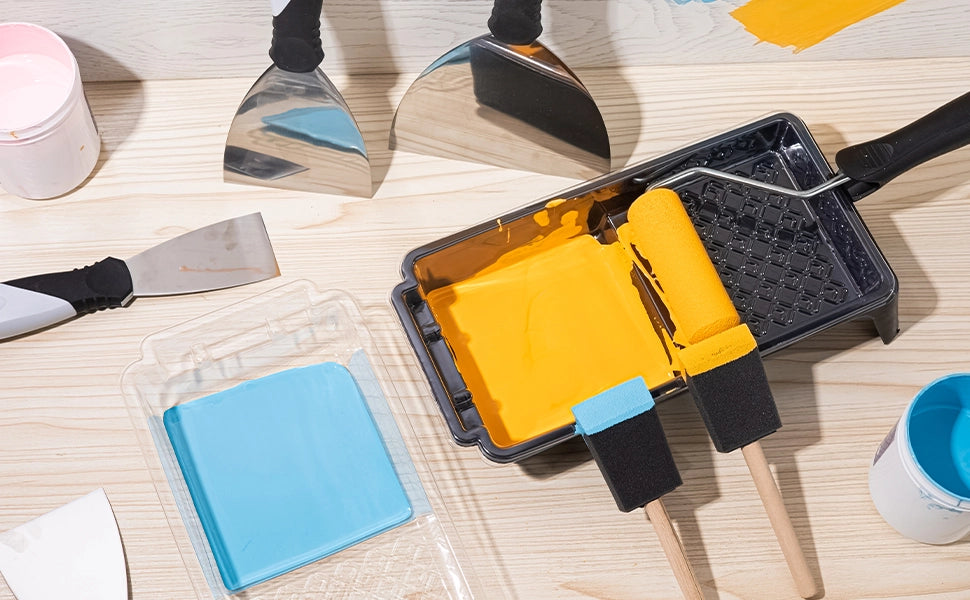Water stains and peeling paint aren’t just eyesores—they’re red flags. Over 40% of home moisture issues stem from hidden leaks, according to the EPA. This step-by-step guide will show you how to repair peeling paint caused by water damage and prevent it from recurring, whether you’re dealing with a bathroom splash zone or a basement flood aftermath.
Tools & Materials You’ll Need
- Moisture meter (50 on Amazon)
- Stain-blocking primer (Zinsser Perma-White Mold & Mildew-Proof)
- Flexible caulk (DAP Dynaflex 230)
- Hydraulic cement (for masonry walls)
- Drywall saw + joint compound (for Sheetrock®)
- HEPA vacuum + Concrobium Mold Control spray
- Dehumidifier (aim for 50-pint capacity)
- Safety gear: N95 mask, nitrile gloves
Step 1: Find the Moisture Source (Don’t Skip This!)
Common culprits:
- Roof leaks: Check attic insulation for dark spots
- Plumbing: Inspect pipes under sinks/toilets with a mirror
- Groundwater: Tape aluminum foil to basement walls – condensation on the outer side indicates external seepage
Pro Tip: Use a $10 thermal leak detector (like Klein Tools IR1) to spot hidden wall moisture.
Step 2: Dry Out the Area Like a Water Damage Pro
- Remove peeling paint: Scrape with 4” putty knife angled at 30°
- Kill mold: Spray Concrobium, wait 24hrs, then HEPA-vacuum
- Dry walls:
-
-
For drywall: Point fans parallel to surface (prevents paper layer tearing)
-
For plaster: Use desiccant bags (silica gel) in wall cavities
-
Target: Below 15% moisture content (use meter to verify)
-
Step 3: Repair Structural Damage
Scenario 1: Crumbling Drywall
- Cut out damaged area with drywall saw (create square edges)
- Install new piece with 1/8” gap
- Seal with fiberglass mesh tape + 3 coats of setting-type compound
Scenario 2: Spalling Concrete/Brick
- Chip loose material with cold chisel
- Apply hydraulic cement with margin trowel
- Texture with a wet sponge before curing
Step 4: Create a Waterproof Barrier
- Seal cracks: Inject silicone caulk into hairline gaps using a sausage gun
- Prime: Roll on oil-based stain blocker (KILZ Original works on nicotine and water stains)
- Waterproof: For high-risk areas (shower walls, basements), apply RedGard waterproofing membrane with 3/8” nap roller
Step 5: Paint for Maximum Moisture Resistance
- Paint formula: 100% acrylic latex (Benjamin Moore Aura Bath & Spa)
- Sheen: Semi-gloss or satin (reflects 35% more moisture than flat)
-
Technique:
-
Cut in edges with angled brush dipped in Floetrol
-
Roll W-pattern with microfiber cover
-
Maintain 70°F room temp for 48hrs curing
-
Prevention: 5 Habits to Stop Future Peeling
- Humidity Control: Run bathroom exhaust fans 20min post-shower
- Gutter Maintenance: Clean every spring/fall (clogs cause 80% of basement leaks)
- Grout Renewal: Apply epoxy grout sealer annually in showers
- Landscape Grading: Ensure soil slopes 6” downward per 10ft from foundation
- Inspection Routine: Check plumbing shut-offs monthly for sweat
When to Call a Pro
- Musty odors persisting after repairs (possible black mold)
- Bubbling paint spreading beyond initial area (active leak)
- Electrical outlets near damage (risk of short circuits)
Real-World Case: A Seattle homeowner fixed recurring kitchen wall peeling by:
- Replacing corroded PVC vent pipe ($120 parts + DIY labor)
- Applying Peel Stop® binding primer before painting
- Installing a humidity-sensing exhaust fan
Result: No repaints needed in 3+ years.



1 comment
Excellent write-up! You’ve explained everything so clearly. Thanks for taking the time to share this.
visit: HdPutty